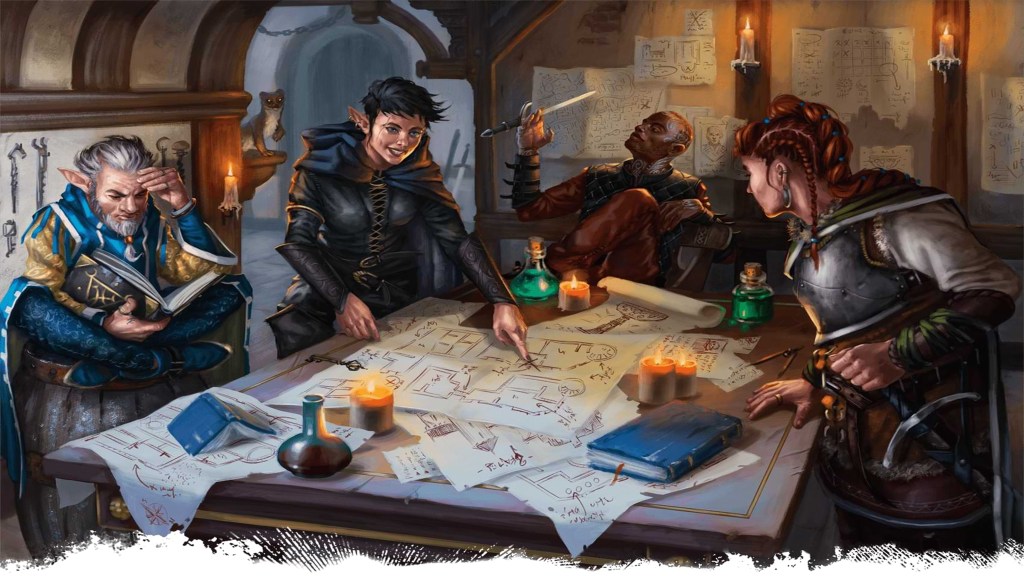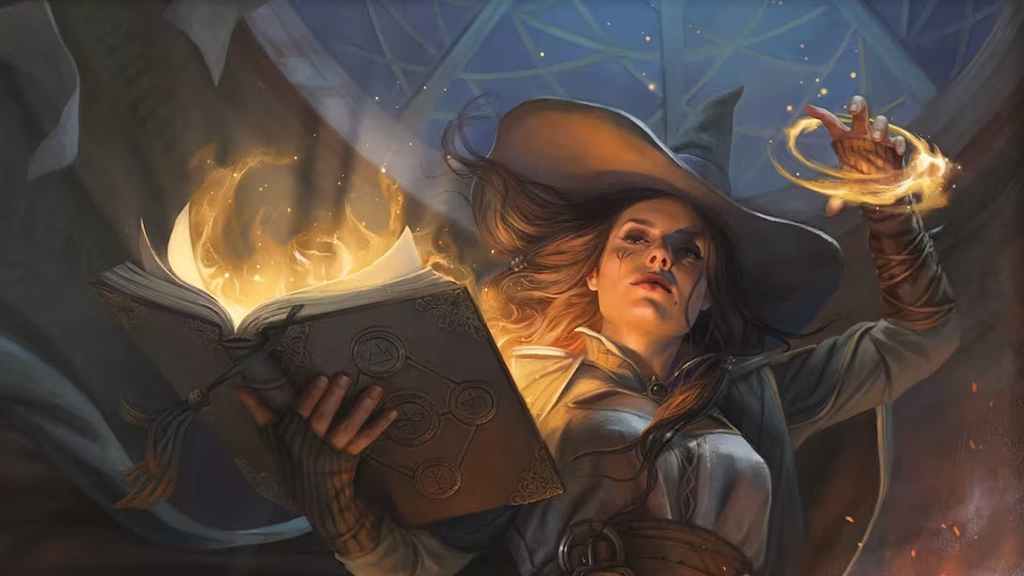8 Easy Ways to Make Your Dungeons & Dragons Campaign More Immersive

There are few things quite as rewarding as running your own Dungeons & Dragons campaign. Sure, getting everyone together can feel like herding cats, and the rules lawyer in your friend group might drive you up the wall. But it all pays off when you manage to deliver a fun play session that keeps players engaged from the first roll to the last roll.
It’s not as much fun, though, if your players get bored or, worse yet, try to treat your campaign as their own personal murder hobo simulator. To keep this from happening, a good DM needs to make every session immersive enough to keep everyone engaged. Not sure how to do it? Just keep reading; I’ve got more immersion tips for DMs than you can fit in a bag of holding!
1) Make Everyone Talk (No, Really)

Dungeons & Dragons is a role-playing game. Despite this, far too many players don’t really want to play a role. Instead, they want to just describe what their character is doing, like “I ask the bartender about the necromancer.” The problem with this approach is that it leaves no room for any real character building, much less fun interactions with other players.
To make things both more fun and more immersive, have everyone talk out loud for their character dialogue and, most importantly, with each other. No goofy accents required! This approach forces even the stodgiest player to consider motivation, as in “how would my meatheaded barbarian ask this question?” In turn, it forces everyone else to consider how their own characters would react.
You might be surprised at just how much fun everyone at the table has once they start getting into it. And making players talk is one of those things all great Dungeons & Dragons DMs do.
2) Integrate Eating, Drinking, and Storytelling

Many DMs turn Dungeons & Dragons sessions into ersatz parties, complete with food. The simplest approach to this is ordering pizza, or maybe just having players bring their own grub. But if you’re willing to go the extra mile as a DM, though, you can make the very act of eating more immersive. Consider having everyone eat at the same time their characters are eating. For added immersion, you can even have them make small talk with each other while staying in character.
Are you a DM who also has some cooking skills? In that case, you could whip up some fantasy-friendly food and have your players eat the same thing their characters are eating. The internet is filled with free recipe ideas, but if you’re feeling fancy, you can draw inspiration from the excellent Hero’s Feast, a D&D-themed cookbook.
If you and your players like to drink alcohol, you can also make that part of the immersive roleplaying. For example, you can roleplay a tavern bartender, whipping up theme-appropriate drinks for everyone (some excellent cocktail recipes can be found in the Puncheons and Flagons book). In some cases, you can go creatively lo-fi. For example, I once painted over cans of pre-made cocktails, tasking players with trying different drinks and trying to come up with cool names for them. It was a fun, taste-testing experiment that helped everyone relax, even as it helped them immerse themselves in my off-kilter campaign.
3) Print and Weather Actual Letters

For the most part, Dungeons & Dragons takes place in a medieval-inspired fantasy setting. That means that characters often communicate with others through good, old-fashioned letter writing. Most DMs simply describe the contents of various letters to their players. But if you want to take things to the next level, you can print out and weather actual letters for your players!
With enough time and patience, you can print letters out on regular paper and weather everything so it looks appropriately old-timey. If you don’t mind throwing a bit of extra money at this project, you can buy medieval-looking printer paper that already looks weathered. For that matter, you can also grab some fancy envelopes and seal it with wax for extra verisimilitude.
If you and your players are up for it, you can even mail real letters back and forth between sessions, communicating in character the entire time. This is admittedly dorky, but it offers a real thrill for players and DMs alike. How much more exciting would getting the mail be if you never knew whether a call to adventure was coming in or not?
4) Integrate Real-World Puzzles

Puzzles are a major part of Dungeons & Dragons. Unfortunately, they often feel disappointing because everything comes down to stats and dice rolls. Getting a D20 may be exciting when players are in the heat of combat, but solving some insanely difficult puzzle just isn’t very satisfying when all they had to do to figure it out was make a lucky roll.
There are different ways to solve this, of course, including leaning more on riddles and other challenges that require some verbal forensic work on the part of the players. In some cases, though, I have taken to straight-up replacing in-game puzzles with puzzles I purchase in hobby stores or online retailers. If you try this, consider getting puzzles of different difficulty levels and doling them out to players based on their characters’ intelligence and other stats.
It’s easy to overdo this trick, and I don’t recommend it for every single puzzle. Done well, though, and this is an easy way to spice up one of the RPG’s most boring elements while giving players a truly unexpected challenge.
5) Candles for the Right Ambiance

Pop quiz: where do you normally DM Dungeons & Dragons? Some do it at home and some do it at their friendly local game store. Either way, the final result is that most players are tossing dice around an old table. Sure, that may be cozy, but it doesn’t exactly get everyone in the mood for roleplaying their various fantasy characters.
That’s why you should get candles (either real candles or those LED ones) and add some lighting to the room after you dim some lights. It may not sound like much, but giving players a combination of darkness and a ye olde light source will help transition their minds out of the boring real world and into the fantasy world.
Once you try the candles, consider taking things to the next level. Dry ice or even a vapor-based fog machine is a great way to make players feel transported to the past!
6) Rock Some Battle Music
Roll for initiative! Battles are a major part of Dungeons & Dragons, and they are meant to be fun and exciting. Unfortunately, battles can sometimes get boring because they drag on too long. When it’s just players and a DM tossing dice in relative silence, it’s easy for combat to start feeling like a slog.
Perhaps the easiest way to make combat exciting and immersive for players is to put on some battle music. YouTube and Spotify are filled with playlists of music created for just such a purpose. If you want to be both DM and DJ, though, you can also cultivate some of your favorite rollicking tunes (think action movies and video game soundtracks) to play during combat. Also, don’t skimp on special effects: if you play a victory tune when a player slays an enemy, it will make their victory feel extra sweet, especially to those who love to play Dungeons & Dragons video games.
7) Make Battles Super Descriptive

Even when you’re pumping some killer tunes, combat in Dungeons & Dragons can still feel a bit stale. That’s because players and DMs alike tend to condense everything into simple, mechanical descriptions: “you hit,” “you miss,” and so on. Fortunately, you can solve this problem by getting more creative with your battle descriptions.
For example, when an archer misses their roll against one of my players, I don’t just say he missed. Instead, I describe how the arrow whizzed past him in the heat of combat, taking a bit of cloth from his armor before embedding itself in a wall, quivering in defiance over a stack of bodies. Doing this takes some getting used to, especially if you’re not a creative writer. Once you master this art, though, you can make combat feel more immersive while better describing your environment.
My last tip on this front is simple: after a player defeats an enemy, I ask them to describe exactly how they dispatched their foe. Usually, players will follow my lead and give awesome, over-the-top descriptions of their ersatz fatalities. This ultimately makes their victories more meaningful and (most importantly) more memorable.
8) Using 3D Terrain

Dungeons & Dragons players always expect to game on flat maps. If you want to both surprise and immerse them, you can trade some or even all of their maps for 3D terrain. For those with deep pockets, there are ready-made solutions: WizKids makes solid products, including their Warlock Tiles. Meanwhile, Dwarven Forge remains the gold standard of 3D RPG terrain, but their high prices reflect that quality.
For everyone else, consider 3D printing. If you’re a DM, a 3D printer will soon pay for itself when you see how easy and cheap it is to print paint all the terrain you need. While you’re at it, you can also print and paint other objects for added immersion. Just imagine how excited your players will be when they get to hold a cool new weapon or an ancient treasure in their hands instead of just hearing a description!




